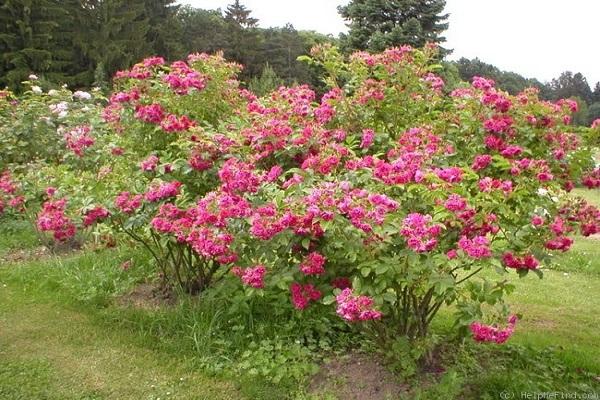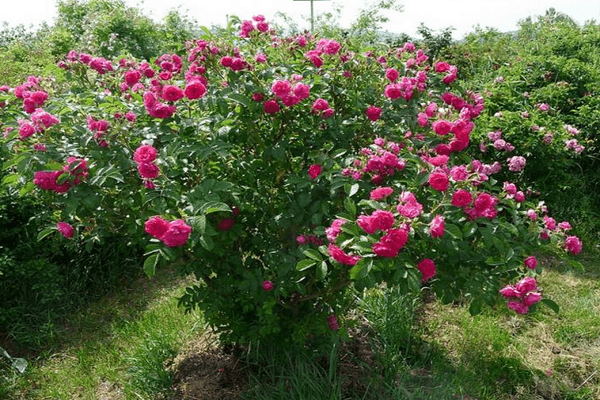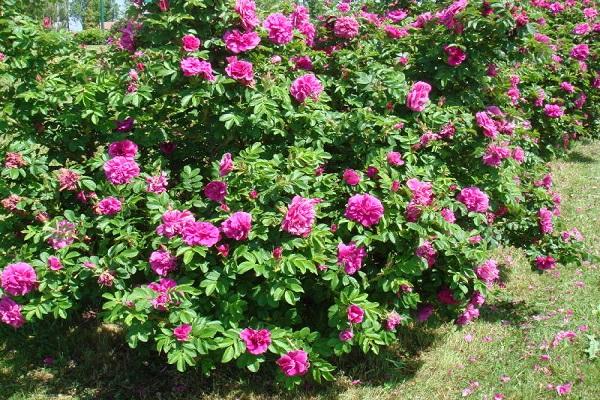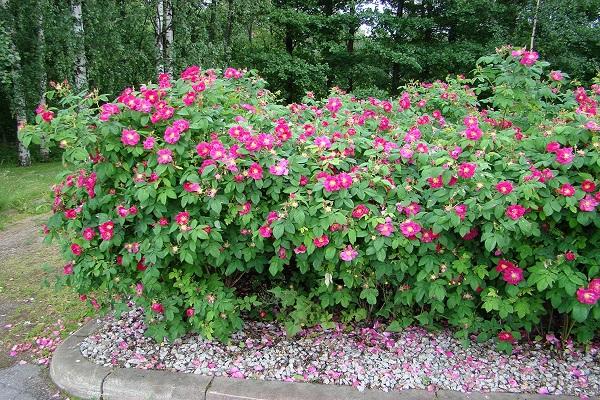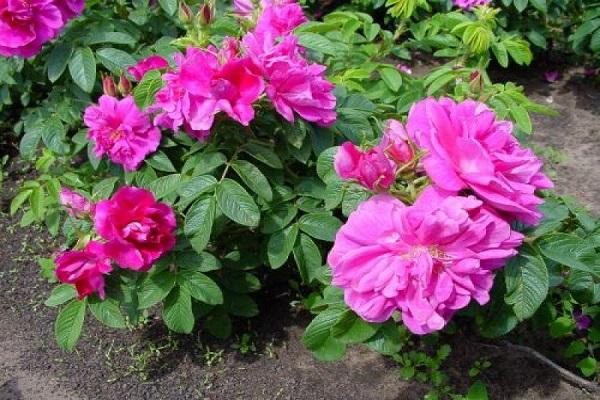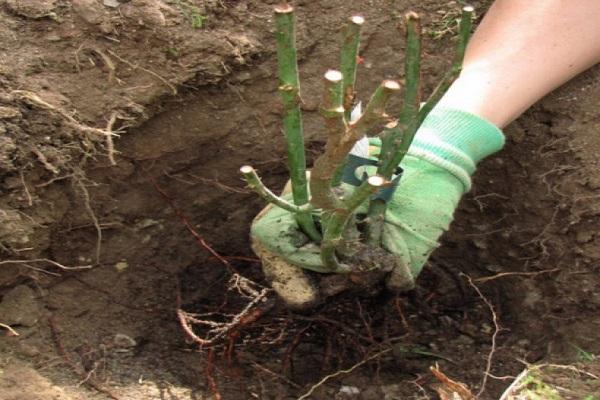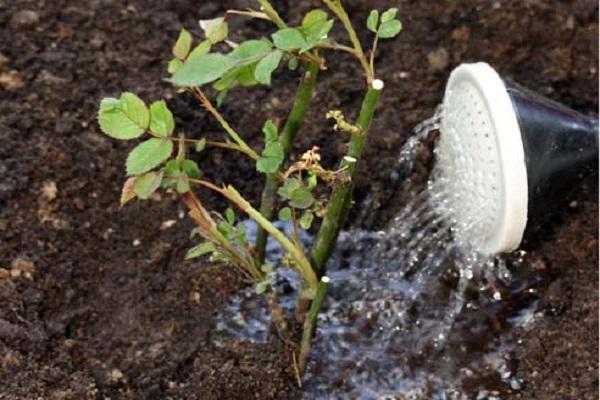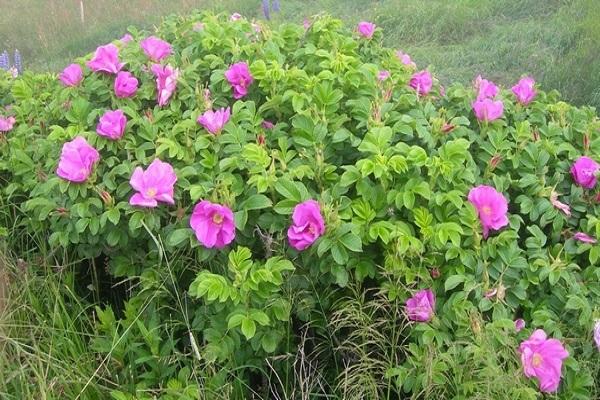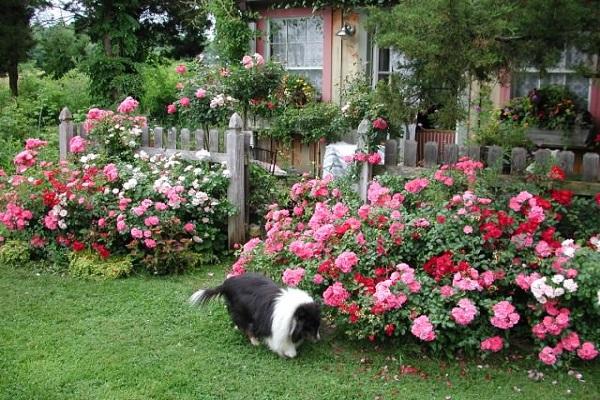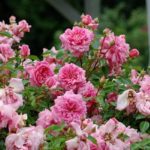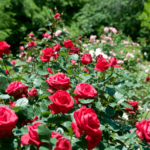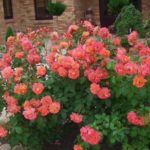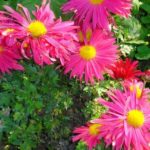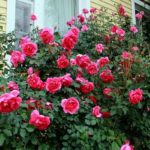In Russia, the wrinkled rose variety is gaining popularity among gardeners. It belongs to the rose hip family. It gained its popularity due to its undemanding care and simple planting procedure. Despite these properties, it is difficult to find hybrids of this variety in the markets.
- general information
- Varieties of rose wrinkled
- Grotendorst
- Alba
- Hansa
- Queen of the North
- Rubra
- Features of cultivation
- Landing dates
- How to choose a landing site
- Selection of seedlings and planting
- Rose care
- Watering
- Top dressing
- Loosening, mulching
- Pinching, pinching, pruning
- Transfer
- Wintering
- Diseases, pests and control methods
- Flower breeding
- Application in landscape design
general information
The second name of the plant is rose rugosa. In the wild, it is distributed in northern China, Japan, Korea and the Far East. Grows in small groups on sandy seashores or coastal meadows. Protected by nature reserves.
The bushes have different shapes, the height of which does not exceed 2.5 meters. A rose can spread its lashes or raise them above the ground. The plant is characterized by large flowers, the diameter of which can be from 6 to 12 cm. The aroma is pronounced. The colors of the flowers are varied and range from white to pink. Different varieties may bear double or single flowers. The inflorescences contain from one to 8 buds, with up to 150 petals in each.
The period of abundant flowering of the rugosa variety of roses begins in June and continues throughout the summer. At this time, there are young buds, blossoming flowers and fruits on the bushes. Not only young branches bloom, but also old shoots. Wrinkles and pubescence of a gray-green hue form on the leaves. The leaves reach a length of 22 cm. The leaves on hybrid species are characterized by a glossy shine. The wrinkled rose has a large number of thorns that bend downwards. The plant has large fruits of an orange-red hue. The size of the berries reaches 2-3 cm.
Varieties of rose wrinkled
Rosa rugosa is the only species of its group. The ancestor who obtained varieties of this flower was the gardener F. J. Grotendorst. The Dutch breeder founded the enterprise "Rosbergen und Grotendorst", whose main activity was the breeding of new varieties. The most popular varieties of wrinkled rose hips grown in Russia are Alba, Hansa, Queen of the North, Rubra and Grotendorst.
Grotendorst
The most popular variety of wrinkled rose. It was bred by Belgian breeders in 1918 in a nursery.The erect bush reaches a height of 1.5 meters. The variety has the usual leaves for this species. A distinctive feature is the unusual shape of the flowers, due to which the rose is called carnation. Inflorescences are collected in 10-20 buds. The most common shades of petals are white, pink and crimson. The variety is frost-resistant.
Alba
The variety was bred by European gardeners. Alba bushes grow straight up and reach a height of 2 meters. The flowering period lasts about a month once a season. The variety has large flowers with a diameter of up to 8 cm. The petals have white or pale pink shades. Alba does not bear fruit, but is resistant to frost and pests.
Hansa
Plants of this species are not tall. They are used to create hedges no more than 2 meters high. The double petals have a lilac hue with gold splashes in the center of the flower. The buds are distinguished by their elongated shape. The variety has a long flowering period: it begins with the arrival of the summer season and ends at the first frost. Characterized by red-orange fruits that resemble small tomatoes.
Queen of the North
It got its name due to its high frost resistance. The plant has a high growth rate. The bushes have a standard height of 2 meters, but in cold regions they take on a compact shape. The flowering period is from June to early autumn. The diameter of a double flower can reach 12 cm. The petals are painted in white-pink or pink shades.
The fruits of the Queen of the North are often used as ingredients for preserves and jams because they contain beneficial elements.
Rubra
The variety is characterized by spreading vines, the length of which reaches 2.5 meters. Flowering lasts throughout the summer. It has large 12-centimeter flowers, the pink shades of which are varied.The fruits are formed by the end of summer and have a bright orange color. Rubra is unpretentious in care, which is why it gained its popularity as a hedge or flower in a mixborder.
Features of cultivation
Rose does not require painstaking care. But in order for a plant to please with its flowers, you should know some of the features of its cultivation.
These include:
- The planting site should be well lit and protected from drafts.
- Before planting, it is important to add additional organic and mineral fertilizers to the soil. Select fertile soil and thoroughly moisten it before planting.
- A distance of half a meter between the bushes is good for planting a hedge; in other cases, the bushes are placed 1.5 meters from each other.
- The depth of the planting holes should be 20 cm.
Landing dates
The optimal time for planting rugosa roses is spring. You should be guided by unopened buds and the absence of night frosts. The soil should be warmed to +7 degrees. Autumn planting is also possible from mid-September to early October. It will allow the plant not only to gain a foothold in the ground, but also to increase immunity due to winter frosts.
How to choose a landing site
Roses need fertile soil. The landing site should be well lit. Drafts are not allowed. Within a few days, the area intended for planting wrinkled roses is dug up. The depth of the backlog should be equal to the bayonet of a shovel. You should also add organic fertilizers, for example, 8-10 kg of peat or humus per 1 square meter. m. Of inorganic substances, superphosphate and potassium salt are used for the same area in the amount of 10 and 50 grams, respectively.
Selection of seedlings and planting
Before purchasing, the seedling is carefully inspected.Damage to the root system or stem is not allowed. The roots should not be dry or deformed. 4 hours before planting, the sprouts are placed in a stimulant solution, for example, “Kornevin”. Planting is carried out in the morning or in the first half of the day so that the root system can adapt to the soil temperature. To prevent fungal diseases, wood ash is poured into the bottom of the planting hole. After planting, the shoots are cut to a third of their length, watered abundantly and mulched.
Rose care
Wrinkled roses do not require special attention. The main agrotechnical measures for caring for flowers include: regular watering, fertilization, and mulching. To prolong flowering, cut the rose, pinch it and mulch the soil around it..
Watering
This type of rose loves moisture, but requires regularity. Irrigation is carried out directly under the root. Liquid getting on leaves and buds can cause them to become diseased. During the period of active growth, the frequency of watering is 2 times a week. One bush consumes up to 12 liters of water. In rainy weather and with the onset of autumn, moistening is stopped.
Top dressing
Organic matter is applied as fertilizer twice per season. In spring and autumn, a solution of mullein and humus is used. At the beginning of the growing season, the plant needs iron and magnesium, which are replenished with special compounds. The use of multi-component fertilizers will increase the immunity of plants and extend the flowering period. Fertilizer should be applied at the root after watering.
Loosening, mulching
Carrying out these activities is important in the first 3 years after planting a rose seedling, when the root system is being formed.The soil is carefully cultivated in a circle around the bush. It is important not to damage the roots of the plant. The mulching procedure reduces the growth of unwanted grass. The shelter also allows you to retain soil moisture.
Pinching, pinching, pruning
Forming wrinkled rose bushes allows you to control and direct the growth of lashes. Pruning is carried out 2 years after planting. Its main purpose is to sanitize the plant and remove dry and damaged stems. The procedure is carried out in mid-spring until young shoots appear. If the rose was planted as a hedge, then its pinching and pinching is carried out annually.
Transfer
The lifespan of a rugosa rose in one place is 20 years. Replanting is carried out when the bush becomes infected or its flowering decreases. Performing these actions is recommended after fruit formation is complete. The plant is cut off at the root, dug out along with a piece of soil and moved into a previously prepared trench. After this, liquid organic matter is added and covered for the winter.
Wintering
Wrinkled rose is frost-resistant, making it well suited for growing in cold regions. Shelter for the winter period is formed for those bushes that grow in the northern regions that are under 3 years old and transplanted to a new site. Before wintering, cut off the buds, remove fallen leaves and fruits. Hilling and mulching are carried out. After this, the upper stems are wrapped in cloth and covered with spruce branches. Remove shelters after the threat of frost has passed.
Diseases, pests and control methods
Rosa rugosa rugosa is famous for its resistance to diseases and pests. But carrying out preventive measures will not be superfluous.Roses can be negatively affected by powdery mildew, rust, and rot. Among the pests that can attack it, the most popular are leaf roller, sawfly and spider mite.
In the spring, they are treated with insecticides. The procedure is carried out until the kidneys swell.
Flower breeding
Like any garden rose, rugosa and its hybrids are propagated by cuttings. For procreation, strong stems with several buds are chosen. Propagation of flowers is also possible with seeds. They are collected from ripe fruits. The grains remain viable for several years. Each gardener chooses for himself a convenient method of growing these flowers.
Application in landscape design
These roses grow well and bloom almost the entire summer season. Therefore, they are convenient to plant as a decorative hedge. Rugosa is suitable for decorating any flower bed or gazebo.
The popular wrinkled garden rose is valued for its ease of care. For abundant flowering, it will need a lighted area with fertile soil and no drafts. Regular watering and timely application of fertilizers will increase its beauty.

